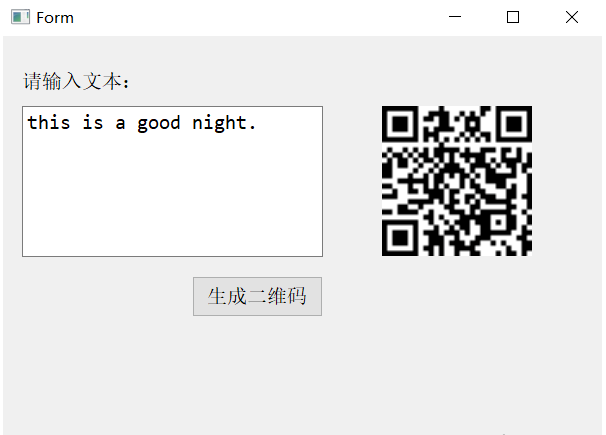摘要: 在嵌入式产品应用开发中,我们经常需要与二维码进行交互。例如,通过使用嵌入式硬件的UUID和WIFI的MAC地址的组合,可以生成一个唯一的CN码,用于物联网对嵌入式平台进行管理。此外,在某些平台上,如WIFI配网,也可以使用二维码进行扫码配网。当然,除了这些应用,二维码还有许多其他用途。
Qt生成二维码需要第三方库qrencode。
1、编译好的qrencode库获取:
链接:https://pan.baidu.com/s/1rss-9LlDVmJ-mfNmK_dELQ
提取码:h8lc
2、Qt配置qrencode
(1)右击Qt工程文件,出现菜单,选择【添加库】->【外部库】来添加qrencode库。
(2)把qrencode.h头文件添加到工程中,然后包含头文件 #include “qrencode.h”
3、代码生成二维码
/**
* @brief GernerateQRCode
* 生成二维码函数
* @param text 二维码内容
* @param qrPixmap 二维码像素图
* @param scale 二维码缩放比例
*/
void GernerateQRCode(const QString &text, QPixmap &qrPixmap, int scale)
{
if(text.isEmpty())
{
return;
}
//二维码数据
QRcode *qrCode = nullptr;
//这里二维码版本传入参数是2,实际上二维码生成后,它的版本是根据二维码内容来决定的
qrCode = QRcode_encodeString(text.toStdString().c_str(), 2,
QR_ECLEVEL_Q, QR_MODE_8, 1);
if(nullptr == qrCode)
{
return;
}
int qrCode_Width = qrCode->width > 0 ? qrCode->width : 1;
int width = scale * qrCode_Width;
int height = scale * qrCode_Width;
QImage image(width, height, QImage::Format_ARGB32_Premultiplied);
QPainter painter(&image);
QColor background(Qt::white);
painter.setBrush(background);
painter.setPen(Qt::NoPen);
painter.drawRect(0, 0, width, height);
QColor foreground(Qt::black);
painter.setBrush(foreground);
for(int y = 0; y for(int x = 0; x data[y * qrCode_Width + x];
if(character & 0x01)
{
QRect rect(x * scale, y * scale, scale, scale);
painter.drawRects(&rect, 1);
}
}
}
qrPixmap = QPixmap::fromImage(image);
QRcode_free(qrCode);
}
做一个按钮对应的槽函数:
void slot_GenerateQRCode()
{
QPixmap qrPixmap;
int width = ui->label_ShowQRCode->width();
int height = ui->label_ShowQRCode->height();
GernerateQRCode(ui->textEdit_Text->toPlainText(), qrPixmap, 2);
qrPixmap = qrPixmap.scaled(QSize(width, height),
Qt::IgnoreAspectRatio, Qt::SmoothTransformation);
ui->label_ShowQRCode->setPixmap(qrPixmap);
}
4、结果
以上就是良许教程网为各位朋友分享的Linu系统相关内容。想要了解更多Linux相关知识记得关注公众号“良许Linux”,或扫描下方二维码进行关注,更多干货等着你 !




 微信扫一扫打赏
微信扫一扫打赏
 支付宝扫一扫打赏
支付宝扫一扫打赏

.png)
